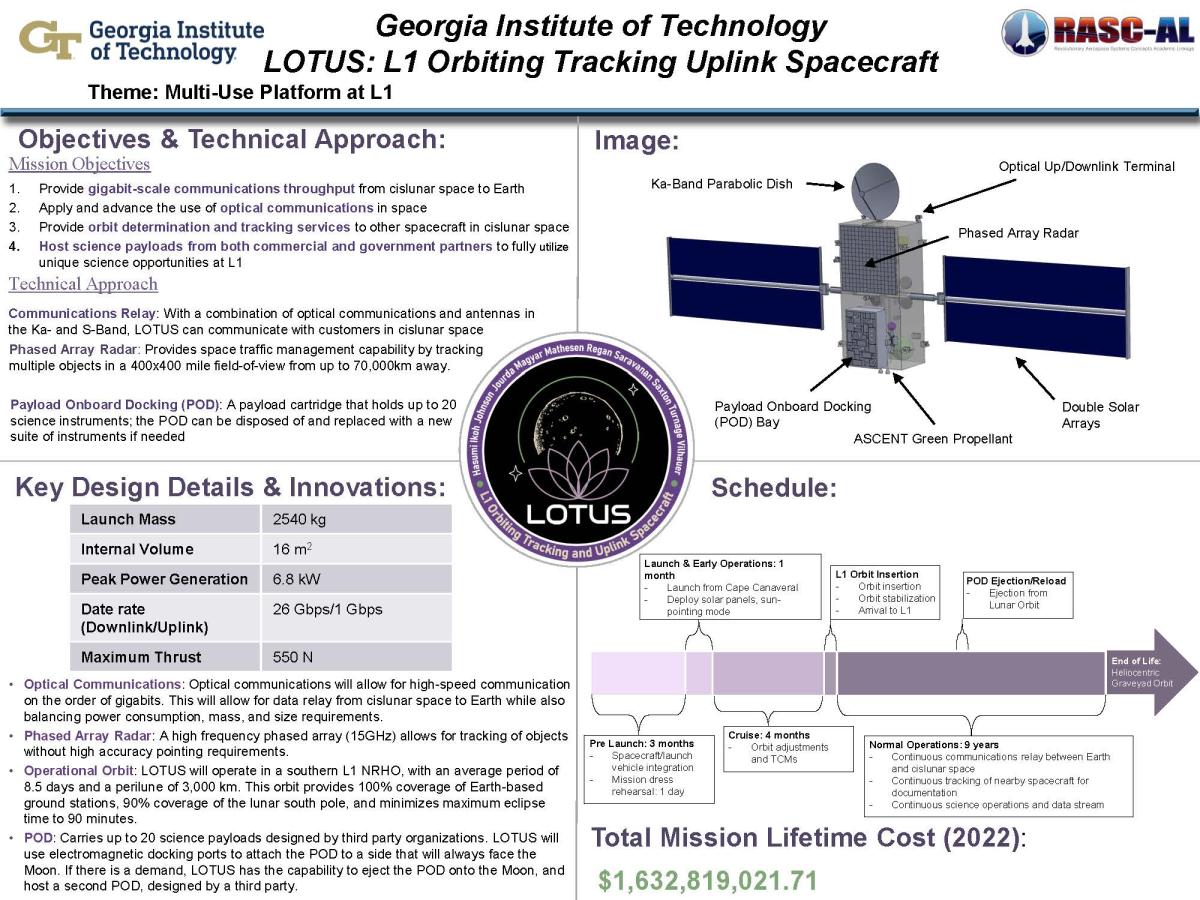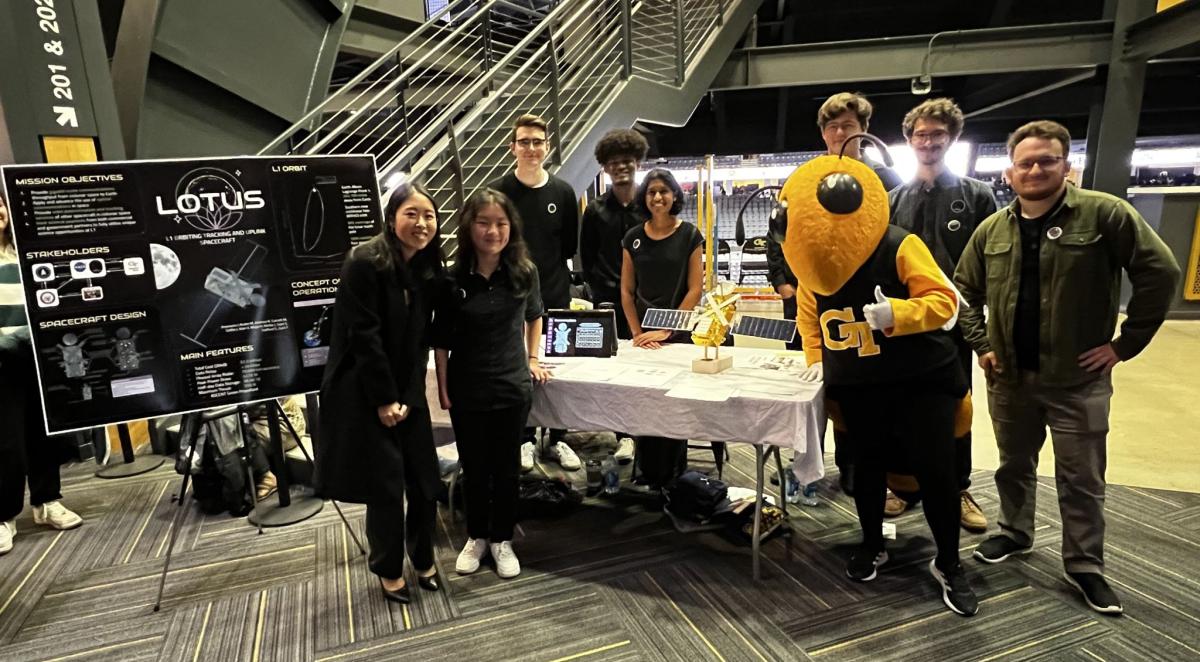Making Lagrange 1 a better place through innovation.

Georgia Tech team LOTUS (L1 Orbiting Tracking and Uplink Spacecraft) is among 15 finalists selected in NASA’s 2023 Revolutionary Aerospace Systems Concepts – Academic Linkage (RASC-AL) competition. Projects had to be innovative, feasible, and have technical merit to advance. Teams will receive a $6,500 stipend to continue project development for their final presentation before a panel of NASA and industry experts in Cocoa Beach, Florida, June 12-14.
The ten-person team consists of aerospace engineering undergraduate students Maya Hasumi, Mollie Johnson, Griffin Jourda, Andre Magyar, Garrett Matheson, Andrew Reagan, Sajni Saravanan, Stafford Saxton, Elle Smith, Zach Turnage, and faculty advisor Álvaro Romero-Calvo. LOTUS selected the Multi-Use Platform at the first Earth-Moon Lagrange (L1) Theme and will compete against four other teams in the category.
NASA describes Lagrange Points as positions in space where the gravitational forces of a two-body system like the sun and Earth produce enhanced regions of attraction and repulsion. Lagrange Point 1 affords an uninterrupted view of the sun.
“Our students have done an amazing job developing an attractive business case backed up by solid technical work. They have successfully coordinated a large team throughout the fall and spring semesters, and I am glad their effort was recognized in such a prestigious competition.”
Romero-Calvo
Team LOTUS designed a spacecraft that would survive in space for ten years with three primary objectives: providing gigabit scale communication relays, tracking services around the moon, and hosting science payloads to solve the problems of space traffic, slow communication, and overall space access and affordability around the moon.
“As more spacecraft start to orbit the moon, and as we try to get humans to the moon, we will need something that can relay a lot of data quickly back to Earth. So, one of LOTUS’ primary goals is to take over relay communication, specifically using optical communication rays, allowing us to transmit data at much higher rates. Typically, spacecraft talk to each other using radio frequency, but we're demonstrating the use of optical frequency instead,” said Mollie Johnson, the student lead for the project.
Their spacecraft includes radar that tracks objects located near the moon, which can prevent collisions and space debris from potentially forming. It can also ensure that fellow space travelers have enough room out in space.
The LOTUS spacecraft will host third-party science payloads allowing clients to focus on their science instruments instead of designing their own spacecraft and subsystems. This makes space access more affordable for potential clients.

RASC-AL advised teams to do something that hasn’t been done before. Team LOTUS met these objectives by using optical communications and a new type of propellant.
“From the beginning, we wanted to come up with something innovative. What makes LOTUS stand out is definitely our use of optical communications, since that has only been proven to work in low Earth orbit, but not outside of Earth’s orbit,” Johnson explained.
They will use a new type of propellant, recently used on Lunar Flashlight, to demonstrate that it can also be used on larger spacecraft. The Ascent propellant is a non-toxic alternative to traditional super-toxic propellants.

From left to right: Maya Hasumi, Mollie Johnson, Andrew Reagan, Stafford Saxton, Sajni Saravanan, Garrett Matheson, Zach Turnage, Griffin Jourda, and Buzz!
